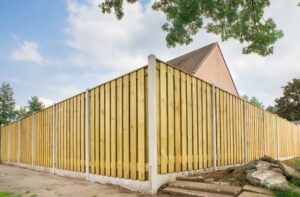Geography of Lee’s Summit, Missouri
Lee’s Summit is a city located in the state of Missouri, United States. With a population of over 97,000 as of 2018, it is the 6th largest city in Missouri and part of the Kansas City metropolitan area. The city encompasses about 65 square miles of land and is situated between the Missouri and Blue Rivers.
Lee’s Summit has a diverse geography shaped by its location, climate, hydrology, flora, and fauna. This local resource page will provide an in-depth look at the various geographical aspects of Lee’s Summit.
Location and Boundaries
Lee’s Summit is located in the west-central part of Missouri, about 20 miles southeast of downtown Kansas City. It sits at the intersection of Jackson, Cass, and Clay counties. The city’s coordinates are 38°56′17′′N 94°22′22′′W.
The city is bounded by the following:
- North: Missouri River
- East: Lake Jacomo
- South: Longview Lake
- West: Blue River
Some of the major cities and towns near Lee’s Summit include Blue Springs, Greenwood, and Raytown. It covers an area of about 65 square miles.
Topography and Geology
Lee’s Summit has a varied topography consisting of rolling hills, valleys, plains, and rugged bluffs. The average elevation of the city is about 900 feet above sea level. The highest point is 1,044 feet near Todd George Road while the lowest elevation is 705 feet along the Missouri River.
The geology underneath Lee’s Summit consists largely of limestone, chert, sandstone, and shale. These sedimentary rock layers were formed during the Pennsylvanian and Mississippian geological periods when Missouri was covered by shallow seas. The bedrock geology influenced the hilly nature of the topography.
There are also glacial deposits from the Pre-Illinoian glacial period scattered across the region. These deposits consist of gravel, sand, silt, and clay materials.
Hydrology
Two major rivers – the Missouri and Blue Rivers – flow through Lee’s Summit. Several smaller creeks and streams also drain the area.
The Missouri River forms the northern boundary of the city. It flows from west to east across the state and is the longest river in North America. The river carved out ancient bluffs that rise over the floodplains.
The Blue River flows from the south and converges with the Missouri River near the northeastern part of the city. It is dammed in two locations to form Lake Jacomo and Longview Lake which provide recreation opportunities.
Some of the other notable creeks include Little Blue River, Burr Oak Woods Tributary, Hurricane Creek, and Town Fork Creek. There are also smaller streams like Wilson Branch, Tarsney Creek, and Hedge Lane Branch.
Most of the city utilizes the Missouri River alluvial aquifer for groundwater. Well depths range from 90 to 300 feet. The water table depth is about 50 to 90 feet.
Climate
Lee’s Summit has a humid continental climate with warm summers and cold winters. The city sees about 40 inches of rainfall per year on average.
Spring is mild with average highs in the 60s°F and lows in the 40s°F along with moderate rainfall. Summer tends to be hot and humid with highs in the 80s°F and lows in the 60s°F. The city can experience severe thunderstorms during this season.
Fall is comfortable with highs around 60°F and lows in the 40s°F. Winters are cold with average temperatures in the 30s°F and overnight lows below freezing. Snowfall averages 15 inches per year.
Flora and Fauna
Lee’s Summit lies in a transition zone between the Ozark Plateaus and the Great Plains. This allows for a mix of plant and animal species from both regions.
Some native trees include oak, hickory, maple, elm, cottonwood, ash, and walnut. Wildflowers include sunflowers, bluestem, aster, milkweed, and goldenrod. Prairie grasses are also common.
Mammals such as white-tailed deer, coyote, rabbits, squirrels, raccoons, opossums, and various rodents inhabit the city’s parks and green spaces. Over 200 species of birds including warblers, vireos, thrushes, and sparrows have been spotted. Reptiles and amphibians like turtles, snakes, and frogs live around water bodies.
Several conservation areas protect local ecology like Burr Oak Woods Conservation Area which preserves forest and prairie habitats. The city also manages natural lands along creeks and tributaries.
Natural Hazards and Issues
Lee’s Summit faces several natural hazard risks and environmental issues:
- Flooding: The rivers and creeks are prone to flooding during heavy rainfall events which can damage property and infrastructure. Floodplains cover about 25% of the city.
- Tornadoes: Tornadoes pose a threat, especially in spring. A major F4 tornado caused significant damage in Lee’s Summit in May 2003.
- Seismic activity: The New Madrid Seismic Zone passes near the city, creating earthquake risks.
- Urban sprawl: As the city grows, farmland and natural areas are being replaced by suburban development. This leads to habitat loss.
- Water pollution: Runoff from agricultural lands and urban areas degrades water quality in lakes, rivers, and groundwater sources.
Ongoing hazard mitigation, sustainable development, conservation efforts, and watershed management are needed to address these issues.
Neighborhoods and Districts
Lee’s Summit consists of many neighborhoods and districts, each with distinct natural settings and features:
Downtown
- Centrally located business district in the valley of Town Fork Creek
- Adjacent to wooded areas and trails along creek
- Historic downtown architecture and city amenities
Greenwood
- Eastern neighborhood along rolling hills
- Borders wooded Burr Oak Woods Conservation Area
- Mix of residential subdivisions and retail development
Longview
- Southwestern community situated on hills overlooking Longview Lake
- Lake provides recreation including fishing, boating, and swimming
- Parks, golf courses, and open spaces
Pryor Road/Colbern Road
- Central area with commercial centers
- Intersected by tributaries and wooded ravines
- Suburban neighborhoods and apartment complexes
River Bluff
- Northern neighborhood atop Missouri River valley bluffs
- Affords scenic views of Missouri River floodplain
- Upscale homes on large wooded lots
Parks and Recreation
Lee’s Summit has an extensive parks system spanning over 1,500 acres of parkland. Here are some of the major recreational attractions:
- Longview Lake: The 760-acre reservoir offers fishing, boating, swimming, and over 15 miles of trails.
- Jefferson County Park: Tranquil 143-acre park with wildflower meadows, restored prairies, and forests.
- Harris Park: 65-acre park featuring picnic spots, playgrounds, sports fields, and walking paths.
- Alexander Park: 5-acre neighborhood park with tennis courts, baseball field, and playground.
- Todd George Road Park: Undeveloped 225-acre park boasting oak-hickory forests, open meadows, and rugged topography.
- Trail system: 50+ miles of hiking/biking trails follow creeks, connect neighborhoods, and provide nature access.
- Burr Oak Woods Conservation Area: Adjacent 3,600-acre wooded area offers hiking, equestrian, and mountain biking trails.
The city’s park system provides diverse recreational and nature opportunities for residents and visitors to enjoy. Open spaces and water amenities allow people to experience the local landscapes and ecology.
Conclusion
In summary, Lee’s Summit has a rich geographic landscape shaped by the Missouri and Blue Rivers, diverse topography, temperate climate, and mix of Ozark and Great Plains ecology. As a growing community, the city grapples with natural hazards, conservation efforts, and sustainable development needs.
Parks and open spaces afford residents and tourists many chances to appreciate the unique beauty and assets of Lee’s Summit’s natural setting. This local resource page provides a detailed look at the varied and vibrant geography of the city.
Hours
Monday: 9:00 AM – 5:00 PM
Tuesday: 9:00 AM – 5:00 PM
Wednesday: 9:00 AM – 5:00 PM
Thursday: 9:00 AM – 5:00 PM
Friday: 9:00 AM – 5:00 PM
Saturday: 9:00 AM – 5:00 PM
Sunday: 9:00 AM – 5:00 PM
Service Areas
Downtown Lees Summit (64063)
New Longview (64081)
Lakewood (64064)
Raintree Lake (64082)
Legacy Wood (64086)
Highland Meadows (64063)
Eagle Creek (64086)
Pryor Meadows (64082)
Winterset Park (64081)
Woodland Shores (64082)
Summit View Farms (64086)
Belmont Farms (64086)
Windsor Station (64081)
Eagle Creek Estates (64086)
Bridgehampton (64064)
Chapel Ridge (64063)
Bent Tree Bluff (64081)
Park Ridge (64081)
Strother Ridge (64082)
Deerbrook (64086)
Kansas City
Blue Spring
Grain Valley
Contact Us.
Get Solutions For All Fencing Services
Every day from
9:00 — 5:00
Call to ask any question





